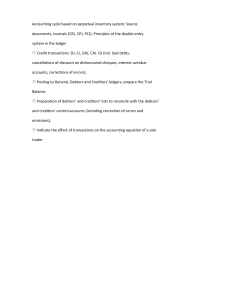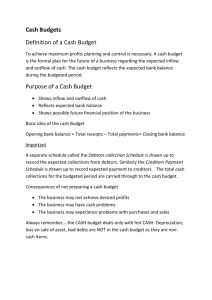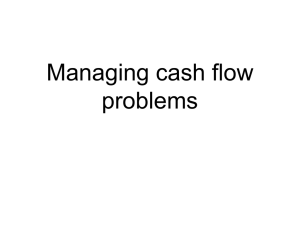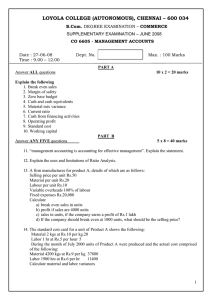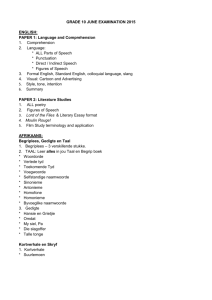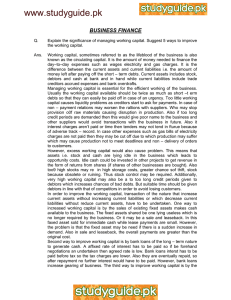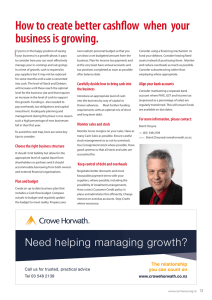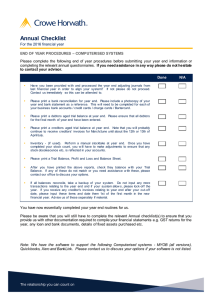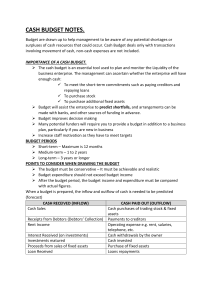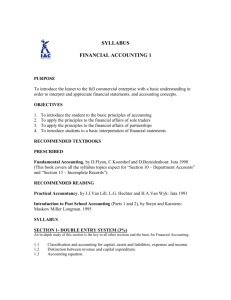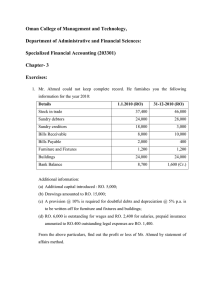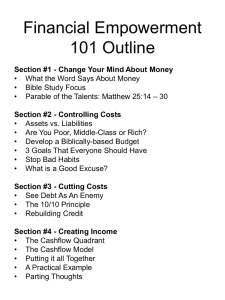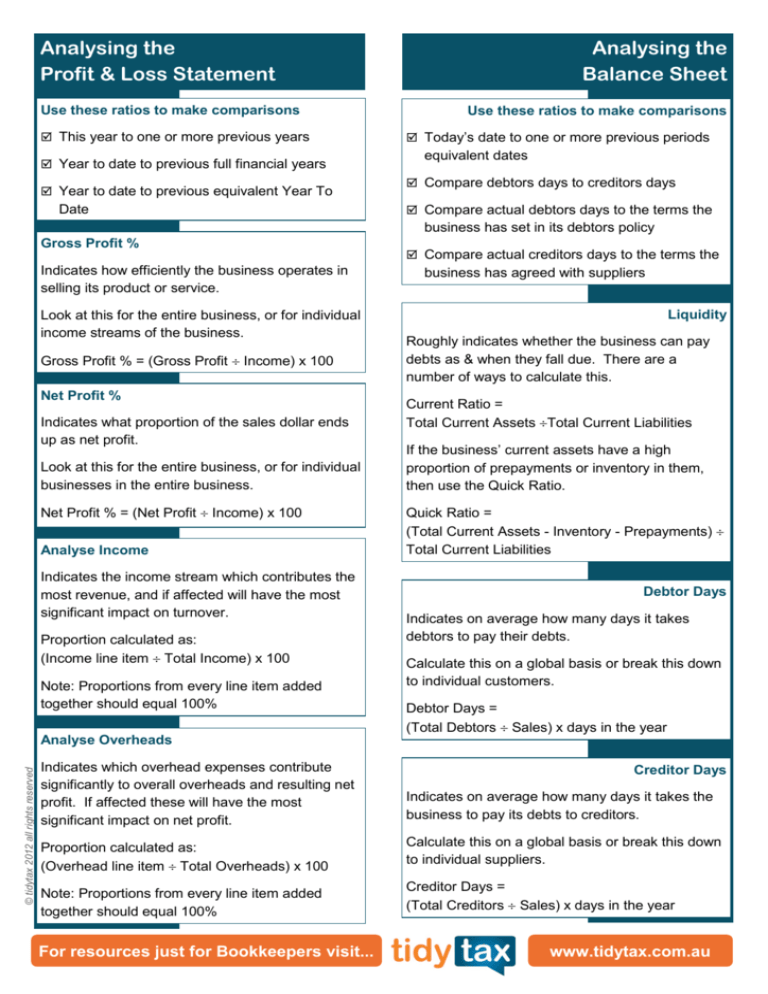
Analysing the
Profit & Loss Statement
Use these ratios to make comparisons
This year to one or more previous years
Year to date to previous full financial years
Year to date to previous equivalent Year To
Date
Analysing the
Balance Sheet
Use these ratios to make comparisons
Today’s date to one or more previous periods
equivalent dates
Compare debtors days to creditors days
Compare actual debtors days to the terms the
business has set in its debtors policy
Gross Profit %
Indicates how efficiently the business operates in
selling its product or service.
Look at this for the entire business, or for individual
income streams of the business.
Gross Profit % = (Gross Profit Income) x 100
Net Profit %
Indicates what proportion of the sales dollar ends
up as net profit.
Look at this for the entire business, or for individual
businesses in the entire business.
Net Profit % = (Net Profit Income) x 100
Analyse Income
Indicates the income stream which contributes the
most revenue, and if affected will have the most
significant impact on turnover.
Proportion calculated as:
(Income line item Total Income) x 100
Note: Proportions from every line item added
together should equal 100%
© tidytax 2012 all rights reserved
Analyse Overheads
Indicates which overhead expenses contribute
significantly to overall overheads and resulting net
profit. If affected these will have the most
significant impact on net profit.
Compare actual creditors days to the terms the
business has agreed with suppliers
Liquidity
Roughly indicates whether the business can pay
debts as & when they fall due. There are a
number of ways to calculate this.
Current Ratio =
Total Current Assets Total Current Liabilities
If the business’ current assets have a high
proportion of prepayments or inventory in them,
then use the Quick Ratio.
Quick Ratio =
(Total Current Assets - Inventory - Prepayments)
Total Current Liabilities
Debtor Days
Indicates on average how many days it takes
debtors to pay their debts.
Calculate this on a global basis or break this down
to individual customers.
Debtor Days =
(Total Debtors Sales) x days in the year
Creditor Days
Indicates on average how many days it takes the
business to pay its debts to creditors.
Proportion calculated as:
(Overhead line item Total Overheads) x 100
Calculate this on a global basis or break this down
to individual suppliers.
Note: Proportions from every line item added
together should equal 100%
Creditor Days =
(Total Creditors Sales) x days in the year
For resources just for Bookkeepers visit...
www.tidytax.com.au
Cashflow
Cashflow Statement
This historical report shows how cash has
moved through the business for a given period.
The Cash Flow Statement uses Net Profit as
the starting point. That is, Net Income should
equal Net Income per the Profit and Loss
Statement.
It then adds back or subtracts the non cash
items in the accounts to calculate cash
generated from business activities.
It then adds back or subtracts other non
business cash flows from investing and
financing to show how the closing balance of
the bank account has eventuated. The Cash at
the End of the Period should equal the total of
the bank account(s) in the Balance Sheet.
In this example, the business took out loans of $65,000. However, if it had received repayments from A. Person and
had a better debt collection policy, the bank account may not have been overdrawn.
Cashflow Forecast
Cash Flow Forecast
Opening Cash Balance
Week 1
$ Actual
Week 2
$
Week 3
$
Week 4
$
Incoming Cash
Sales
Debtors
Interest
Top Ups by owner
Total
$
$
$
$
$
$
$
$
$
$
$
$
$
$
$
$
$
$
$
$
Outgoing Cash
Direct Debit
Auto Payments
Loan Repayments
Creditors
Wages
Super
PAYGW
BAS
PAYG Instalments
Drawings by owner
Total
$
$
$
$
$
$
$
$
$
$
$
$
$
$
$
$
$
$
$
$
$
$
$
$
$
$
$
$
$
$
$
$
$
$
$
$
$
$
$
$
$
$
$
$
Closing Cash Balance
$
$
$
$
The Cashflow Forecast is a forward looking estimate
of what cashflows might look like so that the business
can plan.
This is an example, however, consider what’s most
appropriate for the business:
Has the cash effect of every account in the
Balance Sheet and Profit and Loss Statement
been included appropriately?
How long should the forward estimate be?
Should the estimate be daily, weekly or monthly?
How summarised should the statement be?
Budgeting - where to start
Understand what your normal operations will be next year and assign dollar amounts to that
Find out if the environment will force changes on you in the next year and assign dollar amounts to that
Decide what you would like to implement in the upcoming year and assign dollar amounts to that
Add these parts together to understand what your complete budget will look like
For resources just for Bookkeepers visit...
www.tidytax.com.au

